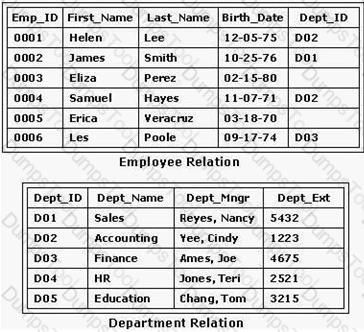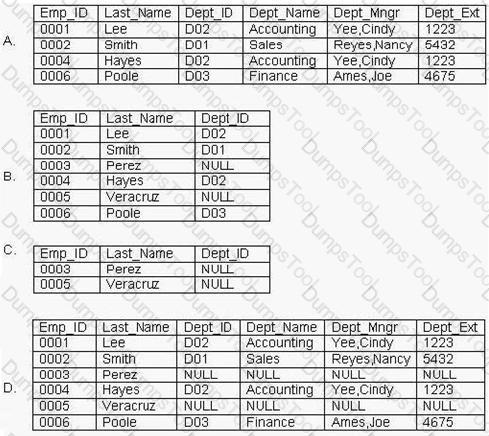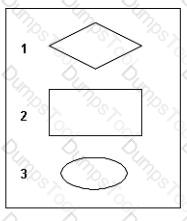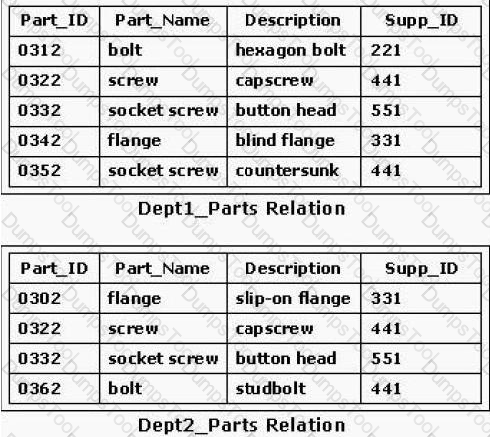Which of the following best describes the information contained in the data dictionary (or system catalog)?
Which of the following is a characteristic of the three-tier database architecture?
Consider the following relational algebraic expression as well as the Employee and Department relations shown in the exhibit: Which of the following relations would result from the given relational algebraic expression?


Consider the symbols shown in the exhibit. Which of the following correctly identifies these symbols when used in an entity-relationship (ER) diagram?

Consider the Dept1_Parts and Dept2_Parts relations shown in the exhibit. Which of the following SQL statements would create a set difference of the two relations with the widest variety of Structured Query Language dialects?

In which situation would the DBMS use a serial schedule to execute the transactions?
The database manager wants to give Rubio and Doe the ability to modify the Project Relation shown in the exhibit. A temporary employee named Temp needs to access the data in the database to generate reports. Which group of SQL statements will perform this task?
Your enterprise has created a database and database application. The testing phase for the project has started. Which of the following best describes white-box testing of the projects software?
Which type of entity must reference another entity for its data to be meaningful?